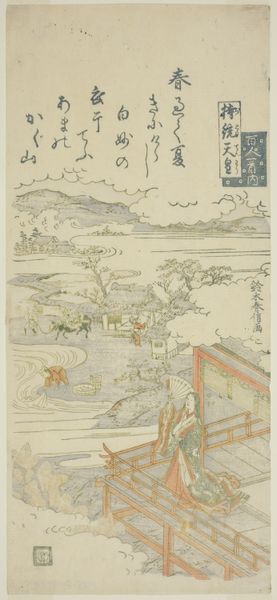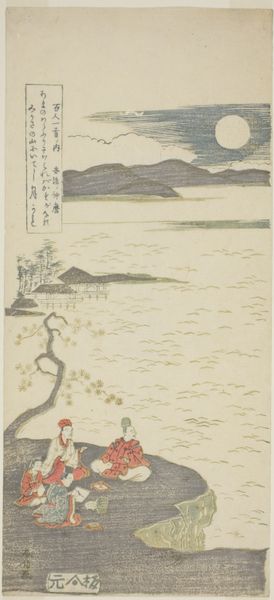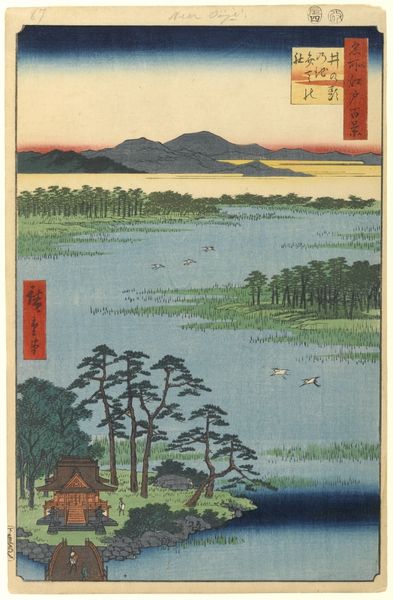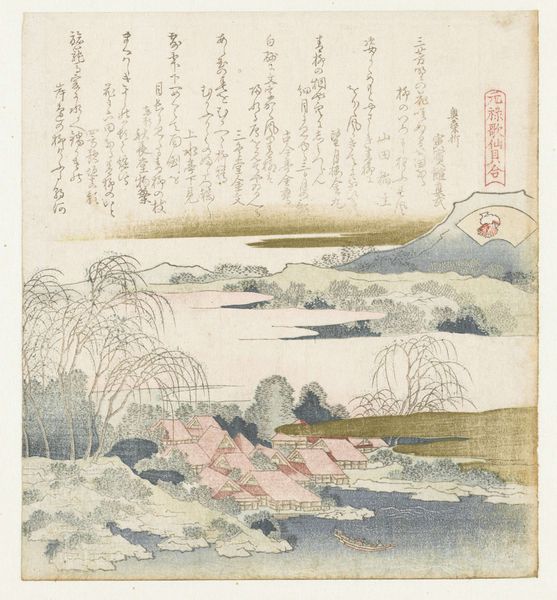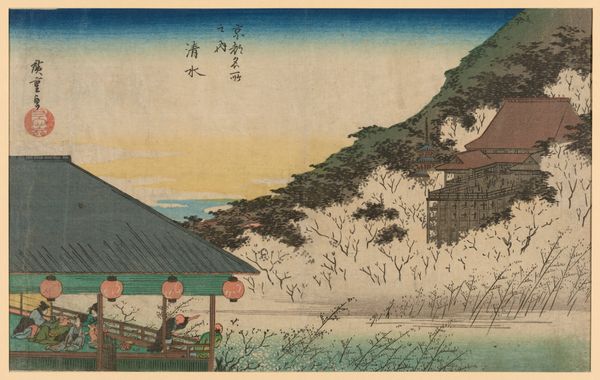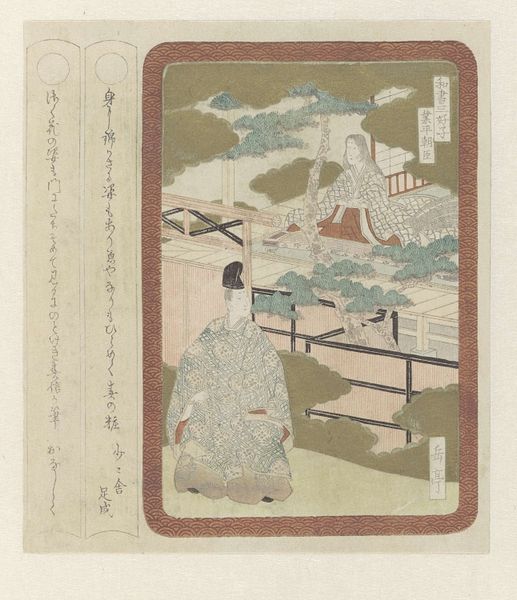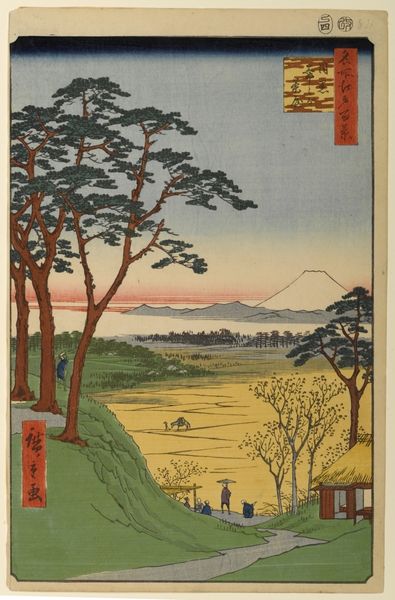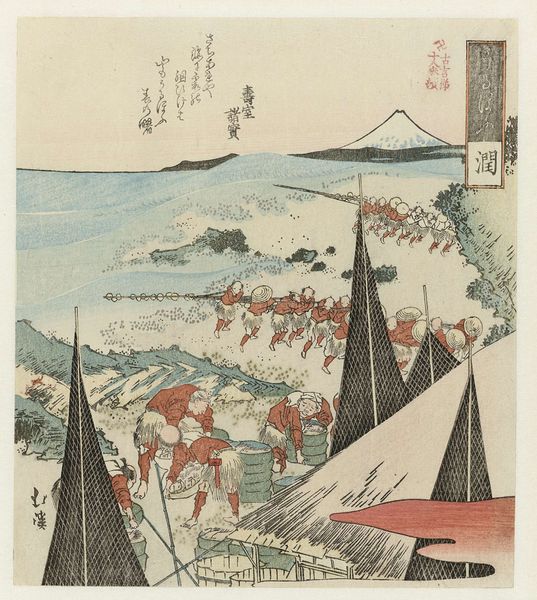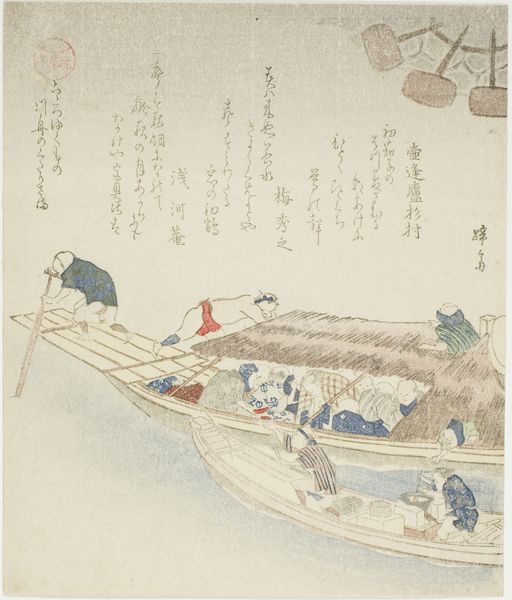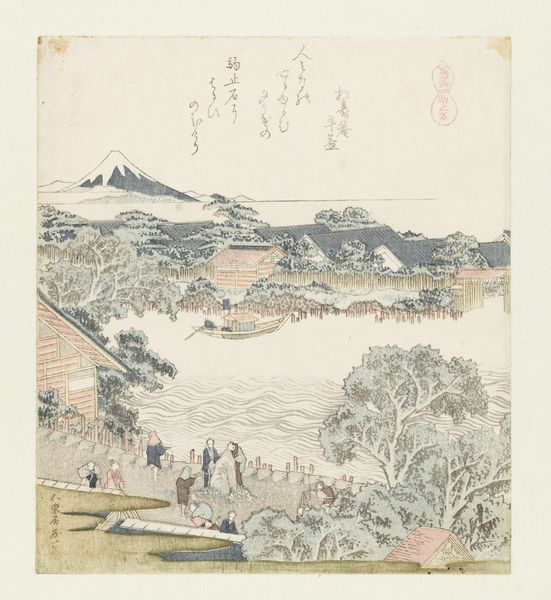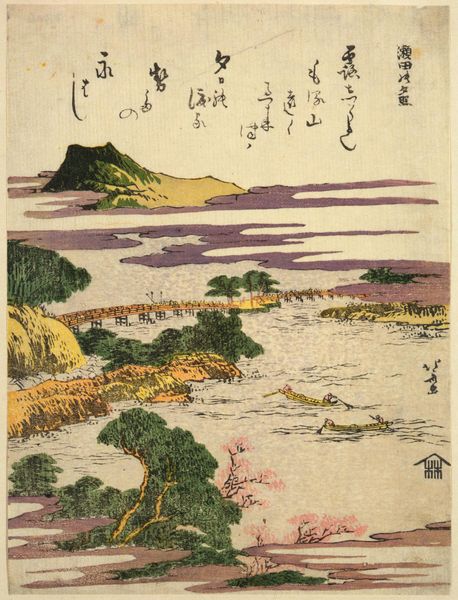
print, ink, woodblock-print
# print
#
asian-art
#
landscape
#
ukiyo-e
#
japan
#
ink
#
woodblock-print
Dimensions: 7 11/16 x 7 1/16 in. (19.5 x 18 cm) (image, sheet)
Copyright: Public Domain
Curator: Looking at Totoya Hokkei’s “Sunrise on New Year’s Day at Kanazawa,” a woodblock print from the early 19th century, I’m immediately struck by the way he uses the materials – the ink and woodblock – to create this scene. The flat planes of color, typical of ukiyo-e, serve to flatten the perspective. Editor: I see that. It’s quite different from traditional Western landscape painting, much more focused on design. What else grabs your attention about it? Curator: It's crucial to consider how these prints were made and for whom. Ukiyo-e, "pictures of the floating world," were commercial products. This image, idyllic as it may seem, served a market. Look at the precision in the lines defining the architecture. Consider the labor involved in carving those blocks, and the intended consumer for these multiple impressions. Editor: Right, it wasn’t just about aesthetic beauty; it was a whole industry. The subject, this particular location... was it significant for the consumer? Curator: Absolutely. The rising sun signifies renewal, very important symbolically on New Year's Day, especially to people navigating a rapidly changing society. Furthermore, the depiction of Kanazawa implicates regional identity and possibly trade. The very availability of such a print speaks to social mobility and increasing consumerism. Notice also how nature is subdued by domesticity here, fitting for a middle class embracing idealized depictions. Editor: So, we’re not just looking at a pretty picture of a sunrise; we’re also seeing the mechanics of production, distribution, and consumption within the culture. Curator: Precisely. This is about the intersection of labor, materials, and the rising mercantile class that consumed them. The woodblock medium, a reproducible, practical, almost democratic method, reveals layers about early 19th-century Japanese society far beyond scenic beauty. Editor: That gives me a lot to think about. I usually look for symbolic meaning first, but this approach is much more grounded. Curator: Seeing art through the lens of production and social context opens a fascinating discourse!
Comments
minneapolisinstituteofart almost 2 years ago
⋮
Located on the western coast of Tokyo Bay, Kanazawa Beach has long been known for its scenic beauty. It became even more famous after the 17th-century Chinese monk Shin'etsu visited and composed eight poems lauding the natural splendor of the area. Titled "the Eight Views of Kanazawa," the poems were inspired by the time-honored Chinese poetic cycle of the "Eight Views of the Xiao and Xiang Rivers." Inscribed in the upper part of the print are two poems about the New Year. A poetry association, presumably based in Kanazawa, commissioned this print to publish its members' verses. The red semicircle in the upper left corner represents the sun that has just risen above the horizon. Looking eastward from Kanazawa Beach, Hokkei's depiction includes the small islands and the winding coastline that are characteristic of this area.
Join the conversation
Join millions of artists and users on Artera today and experience the ultimate creative platform.


